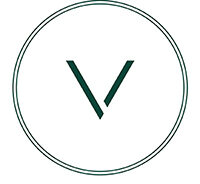Around the World in Dollars and Cents
28 January 2016, by Yolande Barnes
What price the world? Trends in international real estate trading.
The new march of money
World real estate is a global stage on which a variety of economic and monetary acts are played out. Some actors have access to large amounts of equity, others to cheap debt. Many players in recent years have been operating under much looser monetary conditions than in previous decades, so money has become cheaper and opportunities have been presented in those countries where asset prices were hit by domestic recession.
This means that cross-border activity in real estate has generally grown since the global financial crisis of 2008. The proportion of deals done where buyers originate in different countries has increased from a low 17% in 2009 to 20% in 2015. Over the same period, cross-border volumes have grown by 334% from $65 billion to $217 billion.
In this issue of Around the World in Dollars and Cents, we have taken a look at how much real estate there is in the world and how much of that is available for investors, both domestic and cross-border. For the first time we have included agricultural in our assessment, so we are presenting a complete cross-sector picture that includes residential and commercial assets.
We then take a look at how asset values are distributed across global regions and how recent flows of money from one region to another may be in the process of changing this. Differences in monetary conditions and investor practices in global regions are then examined. The results have important and profound implications for global real estate trends.
Looking to the future of world real estate, we study the investing intentions of the equity-rich private sector and see that some money is becoming not only footloose but also more adventurous in the asset classes it is willing to invest. This is a theme that has been picked up by many of our researchers around the world who have each given their tips for real estate investment in 2016 and beyond.
KEY POINTS
■ Global real estate assets comprise nearly 60% of the value of all global assets, including equities, bonds and gold.
■ Three-quarters of global real estate value is residential, 13% commercial and 12% agricultural.
■ About 1% of global real estate assets trade each year in big ticket deals.
■ Long-term global investment prospects are governed by population growth and the resulting demand for housing.
■ Near-term prospects for higher interest rates mean the global search for yield and rental growth is now full-on.
■ Our three pillars of real estate investment for the next decade are the rise of:
1. Secondary and tertiary markets
2. Second-tier cities
3. Alternative asset classes and locations.
■ Our global real estate tips for the next five years include logistics in the tech age, high-quality small cities for the digital creative classes, residential for growing middle-class populations and new resorts in Asia and EMEA.
http://pdf.euro.savills.co.uk/global-research/around-the-world-in-dollars-and-cents-2016.pdf

